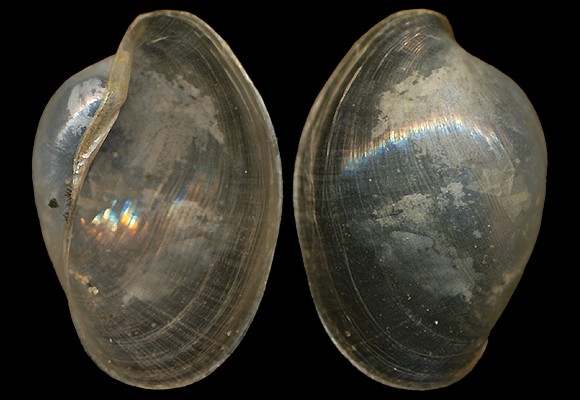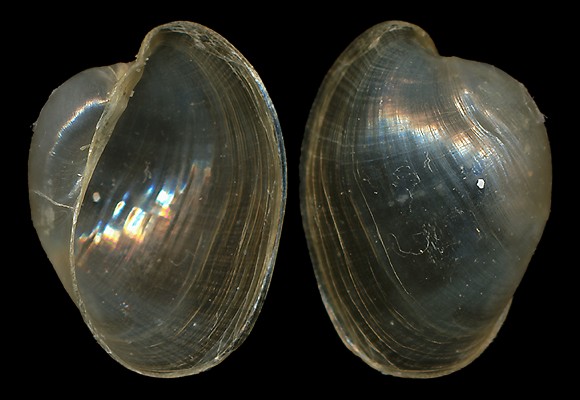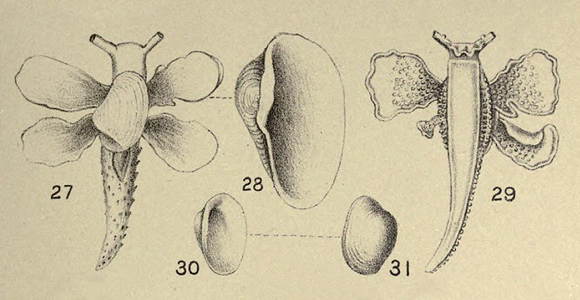
Grazer on green algae in the infralittoral.
This species is one of the three only molluscs that can graze on Caulerpa taxifolia (Vahl) Agardh, 1817. As, on the one hand, this alga, invasive in Mediterranean, is multiplying by small pieces that break off and give new individuals; as, on the other hand, serradifalci is used to feeding by piercing holes into the alga, thereby releasing many debris, one can conclude that this slug facilitates the spread of Caulerpa taxifolia. For more details, see Žuljevic & al.: “Sea slug disperses the invasive Caulerpa taxifolia”, Journal of the Marine Biological Association of the United Kingdom, 2001.
Basionym: Bullea serradifalci. Synonym: philippii.
10-15m deep, Mallorca, Islas Baleares. 16mm.

« Testa oblongo-ovata, inflata, tenui, pellucida, albo-cornea, vix obsolete decussata, latere postico coarctata, attenuata, anterius elargata. – Ho voluto fregiare questa novella specie di conchiglia col nome del chiarissimo archeologo siciliano Antonino Lo Faso-Pietrasanta, duca di Serradifalco, membro dell’Istituto Reale di Francia. » – P. Calcara: Monografie dei generi Clausilia e Bulimo coll’aggiunta di alcune nuove specie…, Palermo 1840, p.46.
3m deep, on Caulerpa prolifera (Forsskål) Lamouroux, 1809. Calambrone, Pisa, Toscana, W. Italy. 12mm.

« Animal elongated, the posterior part and outer surface of pleuropodial lobes bearing numerous scattered conic papillae. Color citron-yellow, with a perceptible greenish tinge, the sole a more diluted tint. Pleuropodial lobes broad and rounded, with narrow bases ; edged by a white line, within which is a crimson line ; the papillae of the surface showing the same distribution of color. Length slightly exceeding one inch. » – Pilsbry p.167.